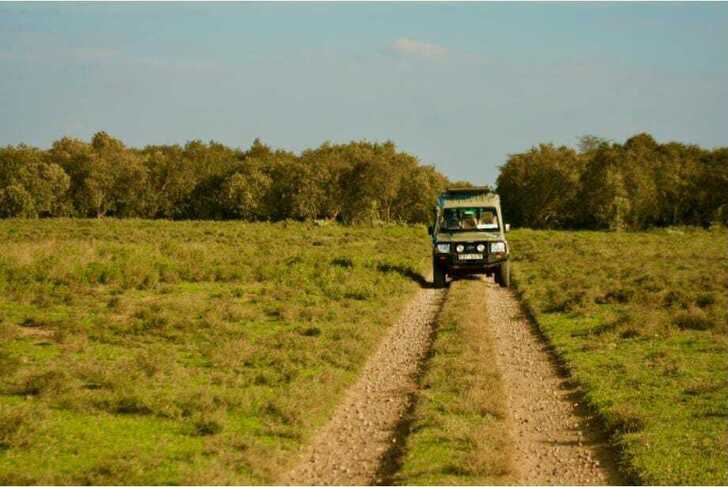Nature lovers from around the world flock to Kenya for unparalleled safari experiences in breathtaking natural landscapes. Home to the iconic wildebeest migration and over 1,000 recorded bird species, this East African country offers a diversity of wildlife viewing like no other. This guide provides insights into planning the perfect Kenya safari adventure, from booking recommendations and must-see destinations to tips for making memorable wildlife encounters and supporting conservation efforts.
Kenya’s Diverse Wildlife: A Brief Overview
Kenya is renowned for its expansive grasslands, woodlands and coastline that provide habitat for an incredible variety of wildlife. Over 1,000 species of birds have been recorded in the country as well as larger mammals like lions, leopards, elephants, giraffes and rhinos. Kenya received over 2 million visitors in 2022 who went on safari to view these animals in their natural habitats. Some of the most promising conservation areas include parks, reserves and community-run conservancies that protect endangered species while benefiting local communities.
Planning Your Safari Adventure
UK travelers interested in Kenya safaris from United Kingdom have many options for planning their trip. The first step is to research various tour operators and lodges that offer guided safari packages or assist with self-drive itineraries. It is advisable to book 3-6 months in advance to secure the best rates and dates. Customized itineraries generally include the most famous parks like Masai Mara and Amboseli alongside other reserves. Flexible access allows sighting iconic species in different regions. Packing light, comfortable clothing layers and familiarizing with areas visited ahead of time helps make the most of game drives.
Top Safari Destinations in Kenya
Some top wildlife viewing areas include the Masai Mara National Reserve renowned for its annual wildebeest migration. Neighboring Amboseli National Park offers picturesque views of Mt. Kilimanjaro alongside elephant families. Tsavo East and Tsavo West National Parks span over 9,000 square miles providing habitat for lions, rhinos and over 450 bird species. Smaller reserves such as Meru offer intimate camping experiences amid buffalo and giraffe. Community-run private conservancies have grown in popularity preserving habitats while developing local livelihoods.
Iconic Wildlife Encounters
Safari enthusiasts dream of spotting the majestic “Big 5” - lion, leopard, elephant, rhinoceros and Cape buffalo. Early morning and late afternoon game drives offer the best chance of seeing predators hunt or gather around dwindling water sources. Elephants appear like gentle giants amongst the acacia trees and mothers teach playful calves life lessons. Long-necked giraffes amble between treetops plucking leaves and zebras gallop in herds evading hidden threats. Further encounters with hippos, baboons, and an array of bird species leave lasting memories of nature’s miraculous diversity.
Off-the-Beaten-Path Experiences
While Kenya’s most renowned parks receive plenty of visitors, lesser-known areas provide intimate wildlife viewing. In the far north, Samburu and Buffalo Springs Reserves shelter unusual species like reticulated giraffes and Grevy’s zebras. The remoteness of Lamu archipelago offers a marine safari spotting dolphins and migrating humpback whales. Along the coast, Tsavo hippo pools contain over 1000 hippopotami and freshwater lakes like Naivasha are alive year-round with over 450 bird species. Those seeking to get away from the crowds will find solitude in such undiscovered wildlife havens tucked away from traditional tourist routes.
Guided Safaris vs. Self-Drive Options
Travellers planning African Luxury safaris from United Kingdom mainly have two options - guided tours or self-drive trips. Guided options offer effortless travel in the hands of experts providing game viewing access across parks with meals provided. This allows fully immersing in nature without distractions. Top lodges pair exquisite accommodation with gourmet cuisine. Self-drive safaris offer more flexibility at lower budgets but require advanced planning skills. Rental vehicles need coordinated between locations and thorough understanding of tourism concessions. Though self-catering is more economical, missing planned game drives can reduce wildlife sightings. Weighing needs and budgets helps select the ideal experience.
Supporting Wildlife and Habitats
Conservation is vital for Kenya’s thriving nature tourism industry supporting over 350,000 jobs. Strict protection of flagship parks containing “Big 5” species remains a high priority. Community conservation efforts aid in poaching prevention through alternative livelihood programs and education. Funds from ecotourism are reinvested in developing reliable water sources, research and healthcare for animals. Grassroots efforts help endangered species like Grevy’s zebras and lions. Visiting certified sustainable lodges helps preserve natural habitats and empower communities co-existing alongside thriving wildlife populations for future generations.
Practical Tips for UK Travelers
UK travelers seeking an enriching safari experience need basic preparations. Review foreign travel and health advisories prioritizing malaria and yellow fever precautions. Pack light, waterproof essentials and layers suitable for variable weather. Bring extra memory cards and fully charged portable chargers. Set travel dates to avoid heavy rain periods influencing game viewing. Lodge bookings include meals so just light snacks may suffice. Cash or debit cards work best outside cities with limited ATM access. International roaming packages keep communication lines open wherever 4G networks exist. Comply with park rules and hire qualified guides when venturing into remote regions to fully appreciate Kenya's crown jewels of nature.
Key Points to Remember
- Kenya hosts over 1,000 bird species and iconic land mammals across diverse ecosystems.
- Plan safaris 3-6 months in advance directly with operators or lodges for the best rates and customizable itineraries.
- Popular parks like Masai Mara, Amboseli, and Tsavo offer outstanding wildlife encounters but lesser-known reserves provide intimacy.
- Guided tours handle complex logistics but self-drive safaris allow flexibility at an economical rate for experienced travelers.
- Supporting community-inclusive conservation through tourism empowers sustainable development and preserves habitats.
- Take proper health considerations and preparations when traveling from UK to ensure safety during your safari experience in Kenya.
Source: Story.KISSPR.com
Release ID: 941004

